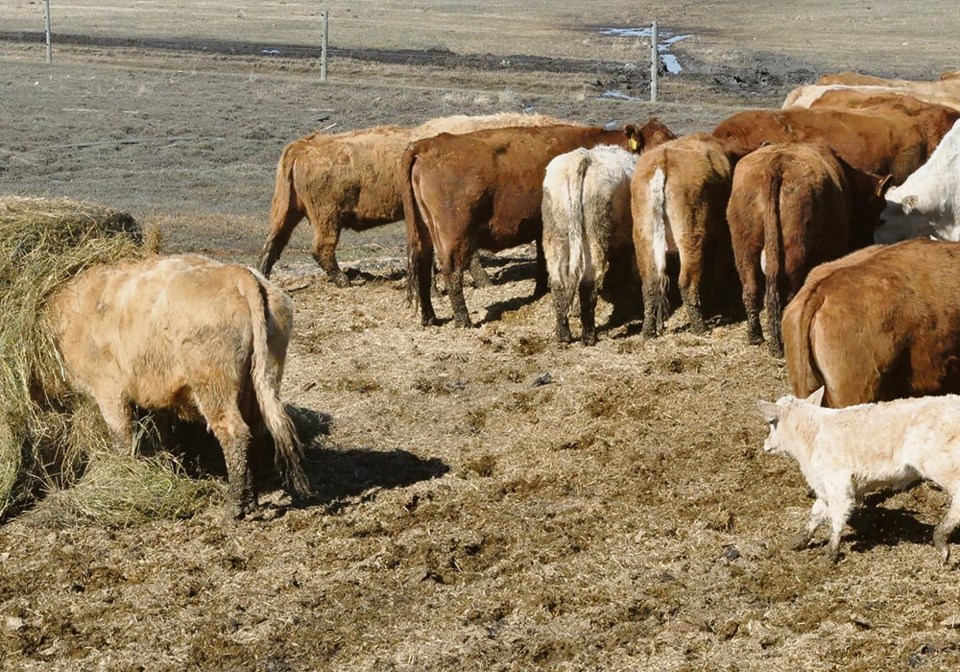WESTERN PRODUCER — The vaccine to protect against infectious bovine rhinotracheitis is one of the most important vaccinations for producers.
IBR is a primary precursor in the bovine respiratory disease complex and is the most common cause of reproductive loss from an infectious standpoint. IBR can also cause severe upper respiratory disease (tracheitis) in older feedlot cattle.
Producers must know when to vaccinate for IBR, whether to use killed or live vaccines, and whether to use parenteral (injectable) or intranasal vaccines.
Live vaccines bring some risk of causing abortions in naïve pregnant animals or preventing conception if they are given too close to breeding. Naïve animals are those that have never been exposed to the virus before, either through infection or vaccination and lack of immunity.
As well, some producers with purebred herds want to avoid titers, a measure of antibodies in the animals’ blood, so they can export live animals to the European Union. This issue is limited to a few herds and the intranasal IBR vaccines offer a strong option.
For other producers, it is important to adhere to specific points. Live vaccines should be administered to calves and heifers before breeding.
Killed vaccines should be considered in cow herds where producers expect zero tolerance with reproductive losses. Killed vaccines cost more to produce and are more expensive. Immunity offered by killed vaccines may not last as long and they should be given before breeding so the immunity lasts through the next pregnancy.
The ideal time to give the IBR vaccines as boosters in the cow herd is after calving and before breeding. This is a small window, if you consider that the start of calving to the start of the next breeding is about two months.
Producers must separate cows from calves and then vaccinate the herd. Many producers do this in two or three batches, which requires considerable work and organization. In many instances, groups or individual animals can be forgotten.
Also, calves are a bit too young to start with parenteral vaccines at this time. And if we wait right before breeding to vaccinate, then it could be too late to vaccinate the cows. It is a quandary.
One company that makes a modified live vaccine has carried out a study when using the vaccine close to breeding. Heifers in this study were protected by a previous vaccination for IBR, so for them a booster shot was given close to calving.
I have never seen in practice or heard in the pharmaceutical world about abortions from the use of modified live vaccines in pregnancy, but it has been reported in naïve animals.
More calves are getting proper IBR vaccinations today because it is present in multi-viral vaccines or with the viral and bacterial pneumonia pathogens. However, many cows are missing annual vaccinations.
If herd management prevents a producer from vaccinating cows after calving and before breeding, or if they feel vaccination is too close to breeding, then the only time vaccines can be administered is during pregnancy.
This is where the risk-reward comes into play. The unborn calf has a competent immune system beginning in the last trimester, so if producers are vaccinating, and the cows were vaccinated the previous year, a live vaccine should be safe. The key word here is “should”.
Are there new acquisitions to the herd in which prior history is unknown? As well, some cattle don’t develop proper immunity to vaccines. There is a risk in using modified live vaccines in pregnant cattle, which needs to be discussed with your veterinarian.
We do know, however, that these risks are rare and are far outweighed by the huge risk the cattle face from both respiratory diseases and abortions if the herd is not vaccinated yearly.
If the vaccination risk is deemed too high, some producers could give intranasal vaccines to cows, like the good old days, which are totally safe.
Squeeze chutes today with neck extensions make that doable but it is not a fun job. As well, BVD protection is not included in intranasal vaccines.
Roy Lewis works as a veterinarian in Alberta.

